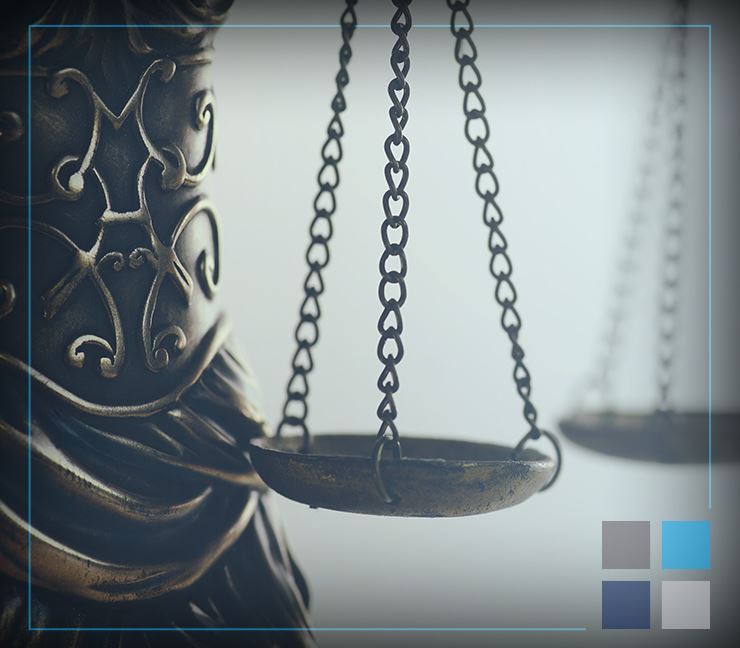
INTELLECTUAL PROPERTY: Trademarks Part III
By M. Lisa Odom and Andrew M. Sevanian
Now that you have a federally registered trademark, consider how you might police or enforce it against third parties in order to protect your trademark rights.
Editor's Note: this article is a follow-up to Andrew Sevanian's "Trademark Part II" article in which Mr. Sevanian addresses the important steps in applying for federal trademark registration and secure trademark rights.
In our trademark practice, we often face situations in which our clients must police (or enforce) their trademark rights against third parties who are using confusingly similar words, phrases and/or logos that violate our client's intellectual property rights. This often comes down to our client's ability to cite relevant trademark law, such as the federal Lanham Act (the "Trademark Act"), for actionable causes against these third parties.
The focus of this article is to address some (not all) of the key issues when considering how to police or enforce your trademark rights against third parties.
POLICING (OR ENFORCING) YOUR TRADEMARK RIGHTS
Trademark owners use several grounds to seek relief against third parties that violate the owner's trademark rights. Those grounds for trademark protection include, but are not limited to, (a) Trademark Infringement; (b) Trademark Dilution; and (c) Unfair Competition.
Infringement:
Perhaps the most commonly presented argument in any trademark dispute is that the other party is "infringing" on the trademark owner's rights. But what does "infringement" really mean in this context?
Trademark infringement turns on a subsequent mark (and/or the use thereof) that is "likely to cause confusion" as to the source of another, prior trademark. See 15 U.S.C. §§ 1114, 1125. Under the Trademark Act, the owner a valid, registered trademark can sue other parties who subsequently use an infringing mark. For infringement to occur, it typically must be shown that the infringing mark is confusingly similar to your trademark based on several different factors (i.e. the marks are confusingly similar in name, sound and/or commercial impression or connotation and/or sufficiently related in terms of the goods or services associated with the mark) to the point that the consumer may not be able to distinguish what or who the mark represents. See Polaroid Corp. v. Polarad Elect. Corp., 287 F.2d 492 (2d Cir.), cert. denied, 368 U.S. 820 (1961) (a landmark case that established the "Polaroid factors" for determining claims of trademark infringement).
By way of example, let's suppose the hypothetical scenario in which Mountain Dew, without any authorization from Nike, were to use the phrase "Just Dew It" on soda bottles and t-shirts. This could be confusingly similar to Nike's trademarked phrase "Just Do It" (featured on a variety of goods/services) and might thereby constitute trademark infringement.
Dilution:
An alternative cause of action is when the infringing mark (and/or use
of that mark) is likely to impair the
distinctiveness of your trademark by whittling away (or "diluting") its ability
to serve as a source identifier of goods. See 15 U.S.C. § 1125(c).
For dilution to apply, under federal law, your trademark must be "famous"
(i.e. it must be "widely recognized by the general consuming public
as a designation of goods and services of the mark's owner").
See 15 U.S.C. § 1125(c). Examples of famous marks include NIKE and
TOYS "R" US.
Under the Trademark Act, there are two forms of Dilution:
- Blurring occurs when an infringing mark "blurs" or weakens the power a mark by associating that mark with dissimilar goods/services. For example, the above hypothetical about "Just Dew It" vs. "Just Do It" could very well be considered a famous trademarked phrase ("Just Do It") being blurred by a confusingly similar mark in "Just Dew It." Another real world example can be found in the case where a company named NIKEPAL, which sold syringes through the website "nikepal.com," was found to dilute or "blur" the strength of the famous trademark NIKE (for apparel and footwear). Nike, Inc. v. Nikepal Int'l, 84 U.S.P.Q.2d 1820 (E.D. Cal. 2007).
- Tarnishment occurs when an infringing mark loads a disreputable meaning on a trademark, and thereby harms the reputation of that trademark by casting it in an unflattering or unsavory light. For example, the adult-content website "ADULTSRUS.com" was found to dilute or "tarnish" the famous mark TOYS "R" US by casting it in an unflattering light. Toys "R" Us v. Akkaoui, 40 U.S.P.Q.2d (BNA) 1836 (N.D. Cal. Oct. 29, 1996).
In learning from these cases, it is increasingly apparent that trademark owners (especially those with "famous" trademarks) must be vigilant in protecting their trademark. In doing nothing, the trademark owner runs the risk of his/her mark becoming diluted and weakened into a "generic" word or phrase that no longer operates as a distinctive trademark. If this were to happen, other parties might then be able to use your mark in a variety of ways because your mark would have become generic and essentially lost its strength as a trademark (i.e., a particular source identifier of goods/services). Examples of trademarks that have been notoriously diluted are "XEROX" and "KLEENEX." Unfortunately for XEROX and KLEENEX, people now associate the products (i.e. a copy of a document or a tissue, respectively) with the marks even if the copy is made by a Canon copier or the tissue is made by Puffs or another paper company.
Unfair competition and false designation of origin:
This occurs when the infringing trademark and/or use of that trademark constitutes a "false designation of origin" or is likely to cause confusion about the "origin, sponsorship, or approval" of goods, services or commercial activities. See 15 U.S.C. §1125. In other words, the infringing mark/use of the mark creates a false impression of sponsorship between you, the trademark owner, and the infringer.
The Nike vs. Mountain Dew hypothetical above is certainly an example of unfair competition based on some false designation of origin or a falsely implied sponsorship between the two parties due to the similarity in the phrases "Just Dew It" vs. "Just Do It."
Another example of unfair competition might include television show featuring a COCA COLA bottle in the background when the television show did not have the authorization to feature the COCA COLA name. This could create, among other things, a false impression of sponsorship or approval by Coca Cola unto the television show. Coca Cola would certainly want to take action to ensure that that their brand name and trademark are only used in a manner to which they consent.
The Big Picture:
When you find that another party might be infringing your trademark rights, or diluting the strength of your trademark, or perhaps even using your trademark in an unauthorized way that otherwise amounts of unfair competition, it is up to you to do something about it.
You and/or your representative might have to take necessary actions to protect your trademark rights, including:
- Sending Cease and Desist (C&D) Letters to infringers of your mark. In such letters, the typical request is that the infringer stops committing such infringing use of your mark. C&D letters are usually the first step taken to stop infringers.
- Filing legal claims. This is usually the subsequent step to sending C&D Letters. Legal claims can include injunctive relief (e.g. barring the infringer from further use of your mark/the infringing mark) and/or damages (e.g. monetary rewards, including lost profits caused by such infringing mark/use).
With these considerations in mind, you are equipped with some of the basics on how you might protect your trademark rights against third parties. When doing so, it is highly recommended that you hire an experienced trademark attorney to advise you with best practices in the various approaches to ensuring other parties cease any further violation of your trademark rights.
For more information about how to ensure that your trademark rights do not become abandoned, so that you can continue to protect your trademark, please stay tuned for our Trademarks Part IV article coming soon.

-
Extensive Business KnowledgeRegardless of the complexity of your case, you can trust that your legal matters will be in competent hands when you turn to Poole Shaffery.
-
Proven Track RecordOur team of accomplished business attorneys has consistently delivered positive outcomes for our clients, resolving complex business matters with skill and expertise.
-
Experience and ReputationPoole Shaffery boasts a team of Santa Clarita business attorneys with strong reputations among judges and fellow lawyers, including AV Preeminent® rated professionals and Super Lawyers® honorees.
